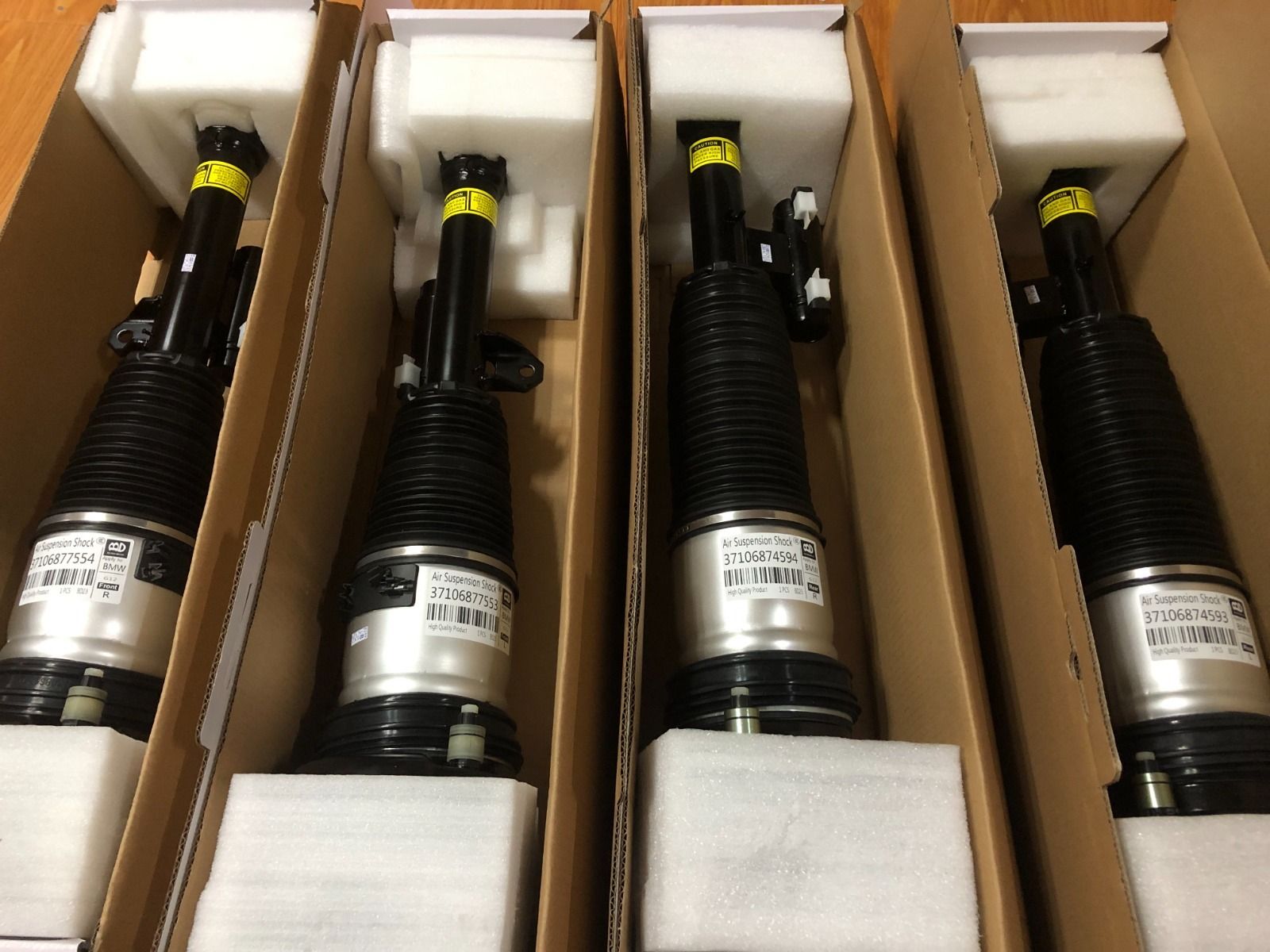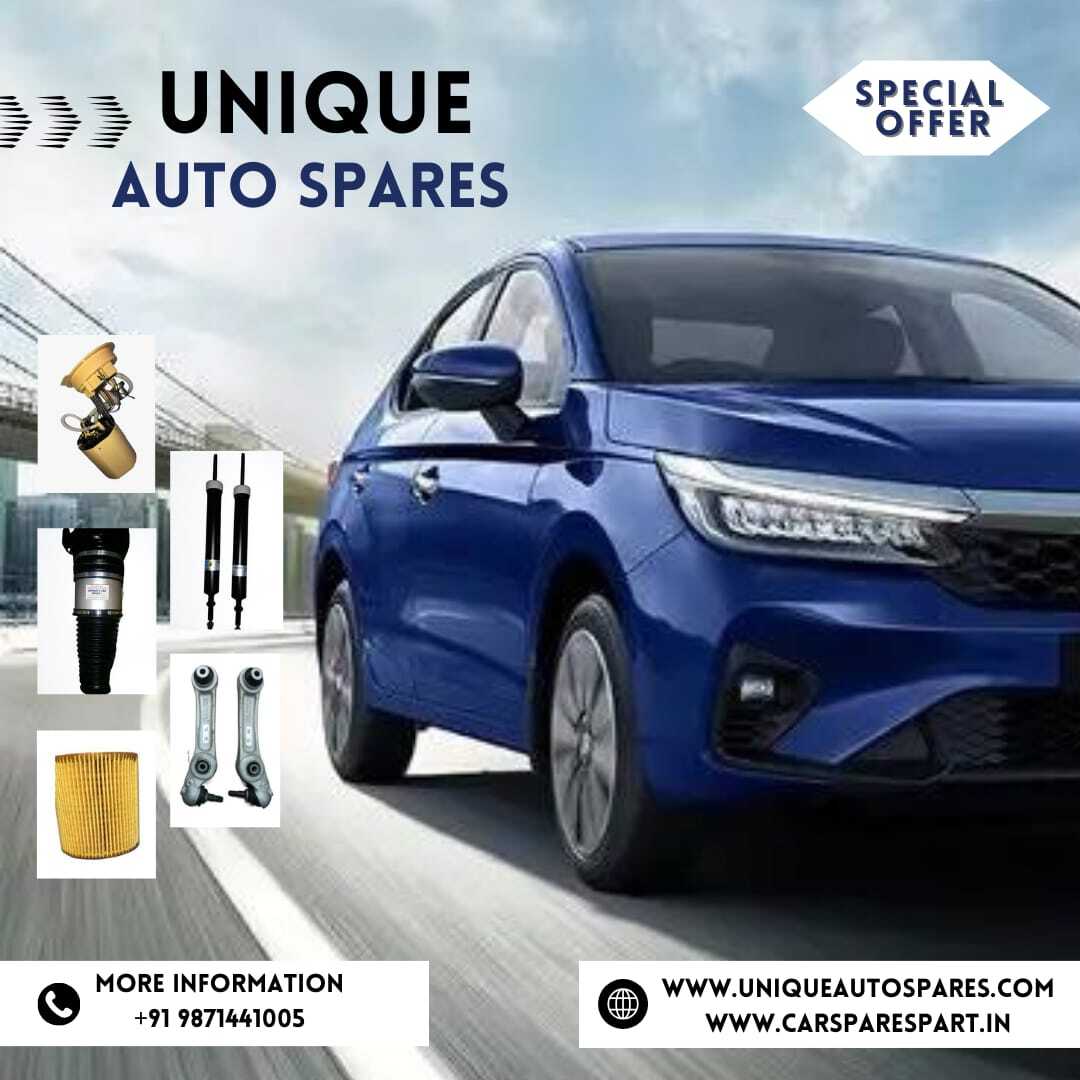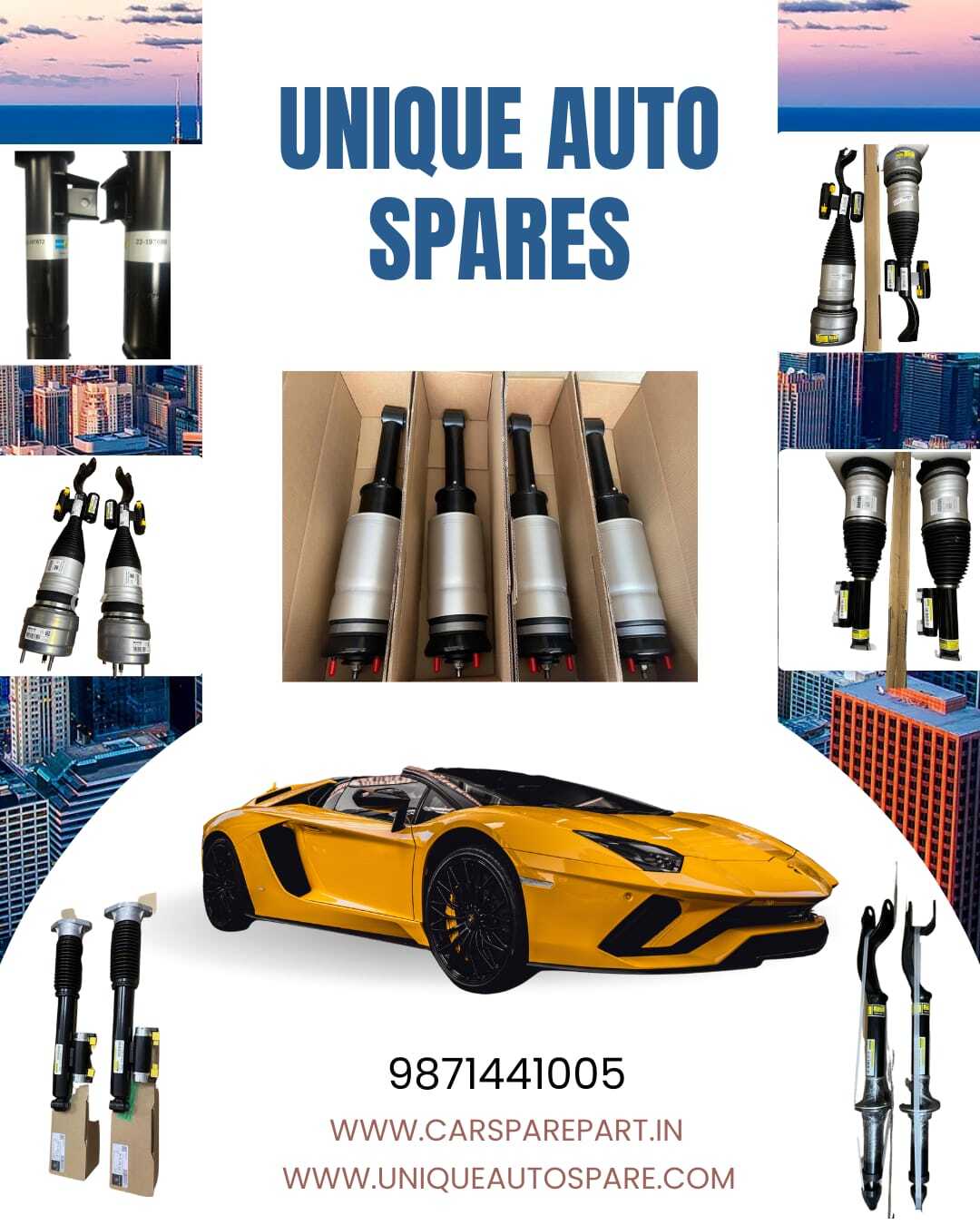BMW Suspension Parts
BMW Suspension Parts Specification
- Corrosion Resistant
- Yes, ISO 9227 standard
- Vehicle Type
- Passenger Vehicle (BMW Series)
- Dimension (L*W*H)
- 350mm x 120mm x 90mm (typical)
- Material
- High-Grade Steel / Aluminum Alloy
- Color
- Black / Silver / Grey
- Load Capacity
- 650 kg (per part avg)
- Model No
- BMW-SP2024
- Connecting Type
- Bolt-On
- Finish
- Matte / Glossy
- Weight
- 3.2 kg (average per component)
- Lubrication Type
- Sealed, Maintenance-Free
- Working Life
- Above 70,000 km
- Part Type
- Control Arm, Ball Joint, Rubber Bush, Shock Absorber (varies)
- Temperature Range
- -35C to +110C
- Size
- OEM Standard Size
- Noise Level
- Low Noise Operation
- For Use In
- BMW Cars and SUVs
- Surface Treatment
- Powder Coated / Electroplated
- Product Type
- BMW Suspension Parts
- Operating System
- Hydraulic & Mechanical
- Method
- Precision Forged & CNC Machined
BMW Suspension Parts Trade Information
- Minimum Order Quantity
- 1 Box
- Supply Ability
- 1000 Boxes Per Day
- Delivery Time
- 1 Days
- Packaging Details
- cardboard box and cover with sack
- Main Export Market(s)
- Asia, Australia, Central America, North America, South America, Eastern Europe, Western Europe, Middle East, Africa
- Main Domestic Market
- All India
About BMW Suspension Parts
A car shock absorber, also known simply as a "shock," is an integral part of a vehicles suspension system. It helps to control the movement of the vehicles springs and suspension, thereby ensuring a smoother ride, improved handling, and better overall vehicle stability. Heres an in-depth look at car shock absorbers:
Purpose and Function of Shock Absorbers
-
Damping Oscillations:
- Shock absorbers dampen the oscillations of the springs, preventing excessive bouncing after hitting bumps or potholes.
-
Improving Ride Comfort:
- By absorbing and dissipating energy from road impacts, shock absorbers provide a smoother ride.
-
Enhancing Handling and Stability:
- They keep the tires in contact with the road, which is crucial for steering, braking, and overall vehicle control.
-
Reducing Wear on Other Components:
- By controlling the movement of the suspension, shock absorbers help reduce wear on tires, brakes, and other suspension components.
Types of Shock Absorbers
-
Hydraulic (Oil) Shock Absorbers:
- Use hydraulic fluid to dampen the motion of the springs.
- The fluid is forced through small orifices inside the shock absorber, creating resistance to the springs motion.
-
Gas-Charged Shock Absorbers:
- Similar to hydraulic shocks but with nitrogen gas added to reduce the aeration and foaming of the hydraulic fluid.
- Provide better performance and consistency, especially under hard driving conditions.
-
Coilover Shock Absorbers:
- Combine a coil spring and shock absorber into a single unit.
- Common in performance and racing applications due to their adjustability and compact design.
-
Adjustable Shock Absorbers:
- Allow the damping characteristics to be adjusted manually or electronically.
- Found in high-performance and luxury vehicles, allowing for changes in ride comfort and handling characteristics.
Components of a Shock Absorber
-
Piston and Piston Rod:
- The piston moves up and down within the shock absorbers cylinder.
- The piston rod connects the piston to the suspension system.
-
Cylinder (Tube):
- Contains the hydraulic fluid or gas and houses the piston.
- Typically has two chambers: a compression chamber and a rebound chamber.
-
Valves:
- Control the flow of fluid between the chambers.
- Create the damping effect by restricting fluid flow, thereby controlling the movement of the piston.
-
Mounting Points:
- Connect the shock absorber to the vehicles frame and suspension components.
- Include rubber bushings to reduce noise and vibrations.
Symptoms of Worn or Failing Shock Absorbers
- Excessive Bouncing:
- The vehicle continues to bounce after hitting a bump or pothole.
- Poor Handling:
- Reduced stability, increased body roll, or a "loose feeling while driving.
- Uneven Tire Wear:
- Abnormal wear patterns on the tires due to inconsistent contact with the road.
- Leaking Fluid:
- Visible hydraulic fluid leaking from the shock absorber.
- Nose Dive or Squat:
- The front of the vehicle dips excessively during braking, or the rear squats during acceleration.
- Clunking or Rattling Noises:
- Unusual noises from the suspension area, indicating loose or damaged components.
Replacement and Maintenance
-
Regular Inspections:
- Check for signs of wear, leakage, or damage.
- Inspect at least every 50,000 miles or as recommended by the vehicle manufacturer.
-
Replacement Procedure:
-
Tools and Materials Needed:
- Jack and jack stands
- Socket set and wrenches
- Torque wrench
- New shock absorbers
-
Procedure:
- Lift the Vehicle: Safely lift the vehicle using a jack and secure it with jack stands.
- Remove the Wheel: Take off the wheel to access the shock absorber.
- Disconnect the Shock Absorber: Remove the bolts and nuts securing the shock absorber to the suspension and chassis.
- Remove the Old Shock Absorber: Carefully take out the old shock absorber.
- Install the New Shock Absorber: Place the new shock absorber in position and secure it with bolts and nuts. Use a torque wrench to tighten to the manufacturers specifications.
- Reassemble and Test: Reinstall the wheel, lower the vehicle, and test the suspension for proper operation.
-
-
Professional Alignment:
- After replacing shock absorbers, its advisable to have the vehicles alignment checked and adjusted to ensure proper handling and tire wear.
Precision Engineering with OEM Quality
Each BMW suspension componentranging from control arms to shock absorbersis manufactured to OEM quality standards and tested to meet ISO/TS 16949 and ISO 9227 compliance. The precision-forged and CNC-machined process ensures exceptional reliability and direct fit without any modification needed during installation. These parts are specifically designed for BMW passenger vehicles, promising a hassle-free, bolt-on solution for dealers and service providers alike.
Versatile Compatibility and Easy Installation
These suspension parts support a wide range of BMW cars and SUVs, including the 3, 5, 7 Series, X1, X3, and X5 models. Offered in individual units or comprehensive kits, installation is straightforward and requires no modifications. Available in matte or glossy finishes, and designed for low noise operation, their OEM standard sizing ensures consistent compatibility across vehicles, making them ideal for distributors, exporters, and wholesalers.
FAQs of BMW Suspension Parts:
Q: How do I determine if these BMW suspension parts fit my vehicle model?
A: Our suspension parts are compatible with BMW 3, 5, 7 Series, X1, X3, and X5 models. They are manufactured to OEM standard dimensions and specifications, so you can confirm fitment using your vehicles make, model, and year. If in doubt, consult your vehicle manual or reach out to your supplier or dealer for guidance.Q: What are the main benefits of using twin-tube, gas-filled shock absorbers with OEM quality?
A: Twin-tube, gas-filled shock absorbers provide enhanced ride comfort, improved handling, and superior damping characteristics. As OEM quality, these components guarantee a direct replacement experience, excellent reliability, and long operating life (above 70,000 km), ensuring optimal performance for your BMW.Q: When should I consider replacing my BMWs suspension parts?
A: Suspension components typically require attention if you notice reduced ride quality, unusual noises, or diminished handling. Its recommended to inspect them regularly, especially after 70,000 km or if your BMW operates under demanding conditions. Direct replacement with our OEM-standard parts restores original performance without the need for modification.Q: Where are these BMW suspension parts manufactured and tested for quality compliance?
A: All components are manufactured and tested in facilities adhering to ISO/TS 16949 and ISO 9227 standards. Precision forging, CNC machining, and stringent surface treatments (powder coating or electroplating) ensure robust performance, durability, and resistance to corrosion for diverse climates, including those in India.Q: What is the installation process for these BMW suspension parts?
A: Installation is straightforward, featuring a bolt-on design with OEM standard size and direct fitment. No modifications or additional fabrication are required, making the process quick and hassle-free for technicians, dealers, and service providers. The sealed construction also allows for maintenance-free operation.Q: Can I purchase these suspension parts as individual components or in a complete kit?
A: Yes, our BMW suspension parts are available both as individual items and as complete kit sets. This flexibility accommodates varying dealership, distributor, and repair shop needs, providing tailored solutions for front or rear axle suspension repairs or upgrades.





- Minimum Order Quantity
- 1 Box
- Supply Ability
- 1000 Boxes Per Day
- Delivery Time
- 1 Days
- Main Domestic Market
- All India
- Main Export Market(s)
- Asia, Australia, Central America, North America, South America, Eastern Europe, Western Europe, Middle East, Africa

Price:
- 50
- 100
- 200
- 250
- 500
- 1000+
More Products in BMW Car Parts Dealer Category
Water pump BMW for E90 and E60 or E66
Minimum Order Quantity : 1 Unit
Product Type : Water pump BMW
For Use In : BMW E90, E60, E66 Series
Material : Aluminum Alloy
Model No : E90/E60/E66
Dimension (L*W*H) : 18 cm x 15 cm x 13 cm
Rear brake pad 7 series
Minimum Order Quantity : 1 Set
Product Type : Rear brake pad 7 series
For Use In : BMW 7 Series
Material : Highquality semimetallic compound
Model No : BMW7RBP2024
Dimension (L*W*H) : 145mm x 55mm x 18mm
BMW E90 Power Window Switch
Minimum Order Quantity : 1 Piece
Product Type : BMW E90 Power Window Switch
For Use In : Four Wheeler
Material : Plastic
Model No : 546464656
Dimension (L*W*H) : 1*1*1 Foot (ft)
BMW accessories online
Minimum Order Quantity : 1 Piece
Product Type : BMW accessories online
For Use In : Four Wheeler
Material : Automotive Parts
Model No : 4646544
Dimension (L*W*H) : 5*5*5 Foot (ft)






 Send Inquiry
Send Inquiry Send SMS
Send SMS
